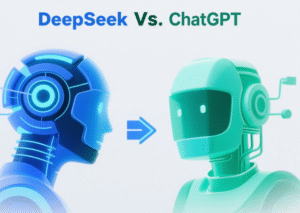As AI language models grow in power and popularity, their environmental footprint has become a significant concern. Both DeepSeek and ChatGPT rely on large-scale computing resources that consume substantial electricity, water, and generate carbon emissions. Here’s an overview of what is known about their environmental impact as of 2025:
ChatGPT’s Environmental Impact
- ChatGPT, especially versions like GPT-4, is an extremely large model with trillions of parameters, demanding massive energy for training and inference.
- Research estimates training a single large language model like GPT-3 emitted over 500 metric tons of CO2, comparable to hundreds of transatlantic flights.
- Annually, ChatGPT’s operations emit around 8.4 tons of CO2, which is more than twice the average human carbon footprint per year.
- Energy consumption for running ChatGPT’s models in data centers requires both electricity and vast quantities of fresh water for cooling (e.g., 700,000 liters used in one GPT-3 training cycle).
- Each ChatGPT query consumes energy roughly equivalent to charging a smartphone to 16%.
- The environmental footprint heavily depends on the data center’s energy source, with renewable sources lowering the impact considerably.
DeepSeek’s Environmental Impact
- DeepSeek is a newer AI platform and aims to be more energy-efficient and cost-effective compared to other large AI models.
- It is known as an “open-weight” model that can be downloaded and run locally, potentially reducing the need for heavy data center use, unlike cloud-dependent ChatGPT.
- DeepSeek’s designs prioritize making AI accessible with less computational expense, which could mean a smaller carbon footprint per query.
- However, comprehensive and transparent environmental data for DeepSeek are limited; many estimates remain speculative.
- Some experts see DeepSeek’s ability to run locally as a potential breakthrough for lowering AI’s environmental impact by offloading queries from massive cloud data centers to individual devices.
Key Takeaways and Broader Context
- Both DeepSeek and ChatGPT’s large AI models contribute to climate change via significant energy use, carbon emissions, and water consumption.
- Training large models is the most energy-intensive phase, with fine-tuning and querying also contributing cumulatively.
- Advances in infrastructure such as renewable energy-powered data centers and more efficient algorithms are critical to mitigating AI’s environmental footprint.
- DeepSeek’s local-run capability offers a promising avenue for reducing centralized data center loads.
- Responsible AI use and ongoing innovation toward eco-efficient AI will be crucial for sustainable growth of these technologies.
Summary: ChatGPT currently has a large and well-documented environmental footprint due to its size and cloud-based model, while DeepSeek, as a newer and lighter open-weight model that can operate locally, potentially offers improved sustainability. However, definitive environmental impact comparisons are limited by the lack of full transparency and data. Both AI ecosystems must focus on energy efficiency and green computing practices to reduce their environmental consequences.









